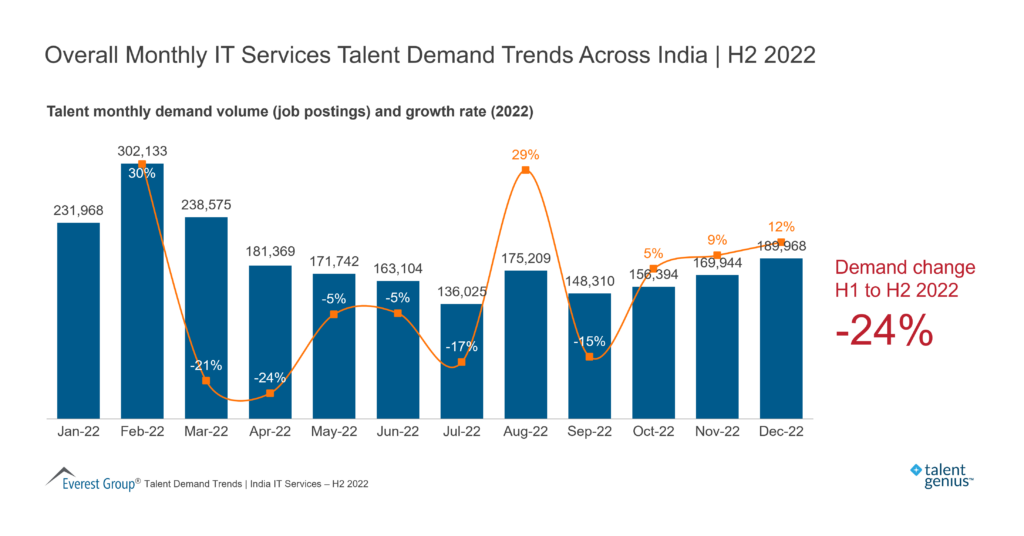Talent Demand

Foxconn, the assembler for Apple iPhones, has established India as its second home after China. Recently, the company purchased a 300-acre site in Bengaluru and plans to set up a plant in Telangana. However, one particularly significant development in the Indian context is its founder Terry Gou’s second attempt to become Taiwan’s president.
Speculations are that if he’s elected, Taiwan’s ties with China would be strong, considering his closeness to China. businessline spoke to Peter Bendor-Samuel, CEO of Everest Group, to find out whether Terry Gou’s running for Presidency could impact Taiwanese companies, including Foxconn, in India. Read on to hear what he had to say.
Making the best location and workforce decisions to optimize for risk, cost, and talent pipeline sustainability is critical in the constantly changing global services market. Having uniquely targeted, up-to-date data and insights to develop strategies and future plans are now key to success. Read on to learn about Talent Genius™, Everest Group’s new interactive, on-demand platform delivering the insights and intelligence IT and BPS organizations need today.
Uncovering the right talent and locations amid economic uncertainty, shifts in geopolitical climates and monetary policies, inflation, attrition, and skill shortages is one of the biggest challenge Information Technology (IT) and Business Process Services (BPS) industries must overcome today.
The wrong workforce and location strategies in an unstable market could lead to suboptimal costs and waste, a lack of long-term growth and sustainability, continued challenges in acquiring and retaining talent, the inability to deliver on organization or client commitments, and overall increased risk. It is critical organizations have market visibility to build the right strategies, but they lack the data they need to make confident location and talent decisions.
That’s where Everest Group’s recently launched Talent Genius™ comes in.
This dynamic, Artificial Intelligence (AI)-powered insights platform has been purpose-built to guide IT and BPS location and workforce decisions with the most comprehensive, reliable, and current location and talent data. With Talent Genius, global IT and BPS firms can build, monitor, and optimize their location portfolio and talent hubs by staying on top of talent market trends.
With Talent Genius, business leaders can find the guidance needed to understand the latest market trends and get a step up when planning for the coming years. The interactive, on-demand platform identifies and analyzes key trends in the global labor market so leaders can quickly develop data-driven location and workforce management strategies.
Let’s take a closer look at this new solution.
Everest Group is committed to creating sustained value for the IT and BPS sectors by applying practical research to specific workforce problems. Talent Genius combines Everest Group’s years of extensive location and talent insights with ongoing market research. It offers a range of data-driven insights and analytics to help global organizations understand the rapidly changing talent market and make well-informed talent and locations decisions.
Through intuitive dashboards, IT and BPS firms get a clear view into locations around the world for country and city assessments, demand hotspots and trend monitoring, salary benchmarking, language skills scalability, peer demand and hiring trends, and peer employer brand perception.
Talent Genius offers organizations the capability to be competitive, future-ready, and confident as they build their talent and location strategies with the ability to:
Using this tool, location and talent strategy leaders can easily determine where they should expand to optimize costs while improving access to talent. They also can assess if they are in the right countries and cities to maintain a robust, risk-managed portfolio.
As the leading research firm in the global service space, Everest Group has decades of experience partnering with global IT and BPS organizations to provide location and talent insights to enable confident decisions.
With Talent Genius, IT and BPS companies can prepare for the future with clarity and confidence. Powered by deep research and a client-first approach, Talent Genius is more than just a software platform. IT and BPS organizations can also directly engage with Everest Group analysts for further insights and support. The unique combination of on-demand data and expert insights ensures organizations have the right level of support to make the best decisions, while still providing the analyst support and guidance Everest Group is known for.
Talent Genius will become IT and BPS organizations’ competitive advantage to create a more agile, data-driven location portfolio. From workforce management strategies to global talent sourcing, Talent Genius offers the data and insights needed to make informed decisions.
“The global services market runs on the power of talent. It’s critical that organizations make the right decisions when it comes to creating and optimizing their workforce and location strategies. That is why we are excited to expand our services portfolio with this new cutting-edge location and talent intelligence tool. With Talent Genius, at the click of a button, our clients will have the highly-contextualized, expert-vetted information they need to confidentially make those decisions. With our commitment to innovation and excellence, we are certain that this new offering will provide unparalleled value to our clients. – Everest Group Vice President Sakshi Garg.
Learn more about Talent Genius or contact us to book a demo.
The global services industry found its stride coming out of the pandemic, quickly adapting to clients’ evolving needs and clocking double-digit growth rates in 2021 and 2022. However, as we look toward 2023, multiple factors – such as cost and price pressures, large-scale lay-offs, energy crises, geo-political instability, rising inflation, and GDP contraction – have left business leaders unsure of what to expect and how to prepare for 2023.
Join us as our experts reflect on the previous year and discuss global services trends, including the potential impact of the expected slowdown in the market on the overall workforce, sourcing, and the shoring/location strategies of enterprises.
What questions will the speakers address?
Who should attend:

©2023 Everest Global, Inc. Privacy Notice Terms of Use Do Not Sell My Information
"*" indicates required fields